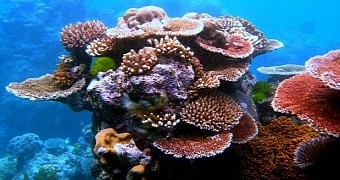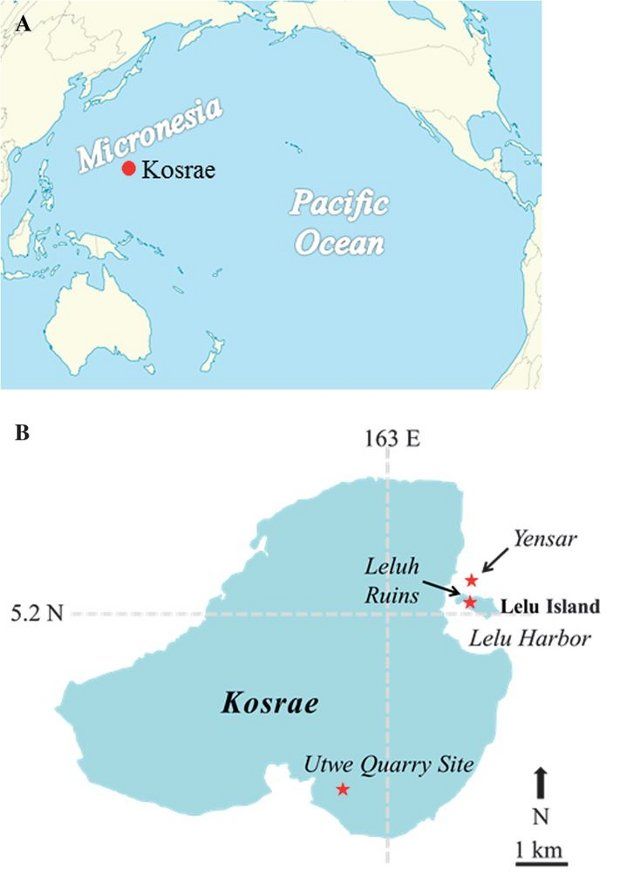Among the remains of the ancient city of Leluh, located just off the mainland of the island of Kosrae in the Federated States of Micronesia in the western part of the Pacific Ocean, sit several centuries-old pyramids that researchers say were built from living corals and once served as tombs.
The pyramids, described in a paper published in yesterday's issue of the journal Science Advances, measure merely 6.5 feet (2 meters) in height. Unlike the ones built erected by people living in Ancient Egypt, they do not end with a pointy top.
Instead, they are shaped like frustums. What this means is that they look like regular pyramids whose tip was cut off. Evidence indicates that these coral structures were temporary burial places for long-gone Kosraean king living in city of Leluh together with other chiefs and commoners.
Burial practices in Leluh
This city, whose location in the Pacific Ocean is detailed in the image below, was essentially a man-made extension adjacent to the lagoon island of Lelu. It was home to Kosraen high chiefs since the 1200s until the 1800s, when traders, whalers and missionaries arrived in the region.
When building the city, the ancient civilization on the island of Kosrae used both corals and basalt as construction materials. Thus, blocks of living coral were used to erect not just housing but also royal tombs like the pyramids described in the journal Science Advances and even sacred places.
Archaeologists say that, when a Kosraean high chief died, they were buried for about three months in one of these pyramids after having been rubbed with coconut oil and wrapped in fabrics. Eventually, they were dug out and laid to rest in a hole in the ground not far from a coral reef.
During the three months that they spent buried in the coral pyramids, the Kosraean high chiefs of old were visited by their loyal subjects who mourned their loss and brought them offerings. Before being reburied, their remains were given a good cleaning.
“Leluh’s truncated pyramidal tombs were, thus, temporary processing points that served a key function after the death of a high-status individual,” researcher Zoe Richards at the Western Australian Museum and colleagues write in their paper.
Establishing the age of the pyramids
To determine how old the pyramids found among the remains of the city of Leluh might be, researchers collected 47 samples of coral material and subjected them to a technique known as uranium-thorium dating. They found the structures to be much older than previously assumed.
Thus, it appears that the pyramids were erected sometime in the early 1300s. This makes them about 3 centuries older than initially estimated, study leader Zoe Richards and fellow researchers explain in the journal Science Advances.

 14 DAY TRIAL //
14 DAY TRIAL // 

